- Understanding Ovaries on Cucumbers
- Why Do Cucumbers Develop Ovaries?
- Effects of Removing Ovaries on Cucumbers
- 1. Increased Fruit Size
- 2. Improved Fruit Quality
- 3. Enhanced Disease Resistance
- 4. Reduced Seed Production
- 5. Decreased Yield
- 6. Longer Harvest Period
- Benefits of Leaving Ovaries on Cucumbers
- 1. Enhanced Flavor
- 2. Increased Nutritional Value
- 3. Added Texture
- 4. Reduced Waste
- 5. Versatile Use
- When to Remove Ovaries on Cucumbers?
- 1. Wait until the plant flowers
- 2. Identify the healthy ovaries
- 3. Remove excess ovaries
- 4. Be cautious with removing all ovaries
- 5. Regular inspection
- Methods of Removing Ovaries on Cucumbers
- 1. Hand Removal
- 2. Pruning
- 3. Chemical Treatment
- 4. Natural Methods
- 5. Hybrid Varieties
- Common Misconceptions About Ovary Removal on Cucumbers
- “Question-Answer”
- Why do cucumbers have ovaries?
- Can you eat the ovaries on cucumbers?
- Are the ovaries on cucumbers harmful to consume?
- What happens if you remove the ovaries from cucumbers?
- Are there any nutritional benefits to eating the ovaries on cucumbers?
- Can you leave the ovaries on cucumbers if you prefer not to eat them?
- “Video” How? When? Why? Prune Cucumbers High Yields Maximum Production Small Spaces… Simple and Easy
Every summer we find ourselves faced with an abundance of cucumbers, and one of the most debated questions among gardeners is whether to remove the ovaries or not. This topic has caused much confusion and controversy, leaving many growers unsure of how to proceed.
What are the ovaries on cucumbers?
First, let’s clarify what the ovaries on cucumbers actually are. The ovaries, also known as the embryonic fruit, are the swollen part at the base of a cucumber that contains the seeds. It is the part of the cucumber that eventually develops into a mature fruit.
Some gardeners argue that removing the ovaries can lead to a more enjoyable eating experience, as the seeds can sometimes be bitter and can alter the texture of the fruit. Others believe that leaving the ovaries intact provides a more natural and nutritious cucumber.
The case for removing the ovaries
Those in favor of removing the ovaries argue that doing so can improve the taste and texture of the cucumber. By removing the seeds, the cucumber becomes smoother and less watery. Additionally, some people find the taste of the seeds bitter, and removing them can result in a more pleasant eating experience.
The case for leaving the ovaries intact
On the other hand, some gardeners argue that leaving the ovaries intact provides a more natural and nutritious cucumber. They believe that the seeds contain valuable nutrients and leaving them in can enhance the overall nutritional value of the fruit. They also argue that removing the ovaries can potentially reduce the yield of cucumbers.
Ultimately, the decision of whether to remove the ovaries on cucumbers or not is a personal one. It depends on your own preferences and goals as a gardener. Consider factors such as taste, texture, nutrition, and yield when making your decision, and feel free to experiment to find what works best for you and your cucumbers.
Understanding Ovaries on Cucumbers
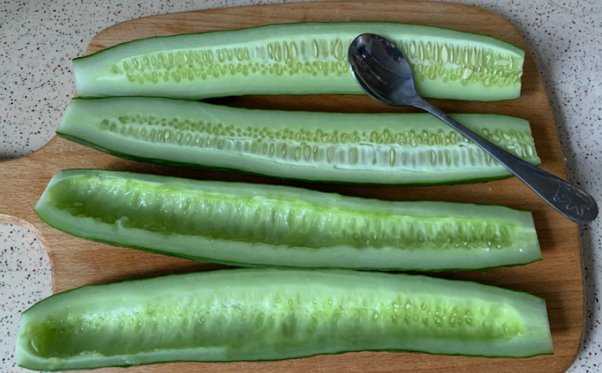
When it comes to growing cucumbers, one of the common questions that arise is whether to remove the ovaries or not. To understand whether it is necessary to remove the ovaries on cucumbers, it is important to first understand what they are and their role in the plant’s reproductive system.
What are Ovaries?
Ovaries are part of a cucumber plant’s female reproductive system. They are located at the base of the flower and are responsible for producing and developing the seeds. The ovary is a small, round-shaped structure that contains the ovules, which are essentially the eggs of the cucumber plant.
The Purpose of Ovaries
The primary purpose of ovaries on cucumbers is to support the plant’s reproductive process. When a cucumber flower is pollinated, the pollen travels from the male flower’s stamen to the female flower’s stigma. This ultimately leads to fertilization, where the ovules in the ovary receive the pollen and develop into seeds.
To Remove or Not to Remove?
Whether to remove the ovaries on cucumbers or not is a matter of personal preference and the specific goals of the gardener. Here are a few points to consider:
- If the intention is to harvest cucumbers for consumption, it is generally recommended to remove the ovaries. Removing the ovaries redirects the plant’s energy towards fruit development, leading to larger and tastier cucumbers.
- If the goal is to save seeds for future planting, it is necessary to leave the ovaries intact. The ovaries will develop into mature seeds that can be harvested once the cucumber has fully ripened.
- Leaving some ovaries on the plant can also be beneficial for genetic diversity as it allows for natural pollination and the possibility of cross-pollination with other cucumber varieties.
The Bottom Line
Ultimately, the decision to remove or leave the ovaries on cucumbers depends on the gardener’s preferences and goals. Removing the ovaries can lead to better-tasting cucumbers, while leaving them intact allows for seed saving and genetic diversity. It is important to consider these factors and choose the approach that aligns with your gardening objectives.
Why Do Cucumbers Develop Ovaries?
Understanding why cucumbers develop ovaries is important for gardeners and cucumber enthusiasts. Ovaries are the female reproductive organs of plants, and they play a crucial role in the production of fruits and seeds.
When a cucumber plant blossoms, it undergoes pollination, either through self-pollination or cross-pollination by insects or wind. Pollination is necessary for the growth and development of ovaries. Once pollination occurs, the plant’s ovaries begin to develop into fruits.
The development of ovaries in cucumbers is a natural process that enables the plant to reproduce. The ovaries contain the ovules, which are fertilized by pollen to form seeds. As the fruit grows, the ovaries swell and become the cucumber we harvest and eat.
It’s worth noting that not all cucumber plants develop ovaries at the same rate or in the same manner. Some may show signs of ovaries earlier in the growing season, while others may take longer to develop. Factors such as temperature, humidity, and pollination success can affect the growth and development of ovaries in cucumbers.
To optimize the development of ovaries in cucumbers, it is essential to provide the plants with the ideal growing conditions. This includes adequate sunlight, water, and nutrients in the soil. Additionally, ensuring proper pollination by attracting pollinators to the garden can also help improve ovaries’ growth and development.
In conclusion, cucumbers develop ovaries as part of their reproductive process. Understanding this natural phenomenon can help gardeners and cucumber enthusiasts make informed decisions about their care and cultivation.
Effects of Removing Ovaries on Cucumbers
Removing ovaries on cucumbers is a common practice among gardeners and farmers. The decision to remove ovaries is based on the desired outcome and the specific needs of the crop.
1. Increased Fruit Size
One of the effects of removing ovaries on cucumbers is an increase in fruit size. By removing the ovaries, the plant can redirect its energy and nutrients towards the remaining fruits. This can result in larger cucumbers with enhanced quality and appearance.
2. Improved Fruit Quality
Another benefit of removing ovaries is the improvement in fruit quality. By reducing the number of fruits on the plant, the available resources can be concentrated on the remaining fruits. This allows for better nutrient absorption, resulting in cucumbers that are juicier, crisper, and more flavorful.
3. Enhanced Disease Resistance
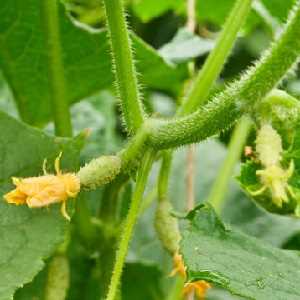
Removing ovaries can also help improve disease resistance in cucumber plants. When ovaries are removed, the plant has fewer entry points for pathogens. Additionally, with fewer fruits to support, the plant can allocate more resources towards its defense mechanisms, strengthening its ability to fight off diseases.
4. Reduced Seed Production
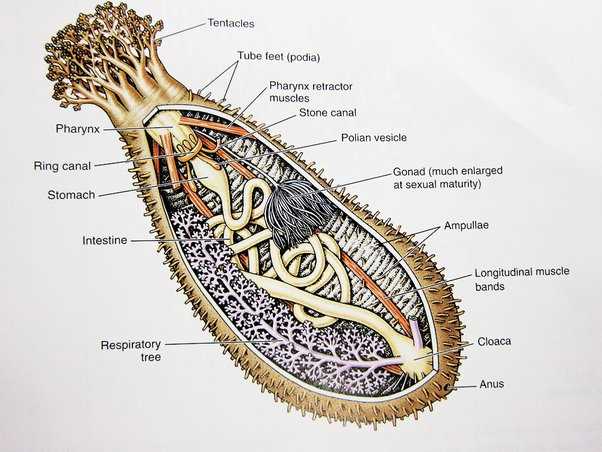
Removing ovaries on cucumbers can be beneficial for those who prefer seedless fruits. By removing the ovaries, the cucumbers will not develop seeds, resulting in a seedless variety. This can be advantageous for culinary purposes, as seedless cucumbers are often preferred for their texture and taste.
5. Decreased Yield
On the other hand, removing ovaries can lead to a decrease in overall yield. Since the plant will produce fewer cucumbers, the total harvest will be reduced. It is important to consider this factor when deciding whether to remove ovaries, especially if high yield is a priority.
6. Longer Harvest Period
Removing ovaries on cucumbers can extend the harvest period. By removing the first ovaries, the plant will focus on producing new fruits, which can prolong the harvesting season. This can be advantageous for gardeners and farmers who want a continuous supply of fresh cucumbers throughout the growing season.
| Effect | Advantages | Disadvantages |
|---|---|---|
| Increased Fruit Size | Enhanced quality and appearance | N/A |
| Improved Fruit Quality | Juicier, crisper, and more flavorful cucumbers | N/A |
| Enhanced Disease Resistance | Stronger defense against pathogens | N/A |
| Reduced Seed Production | Seedless variety for culinary preferences | N/A |
| Decreased Yield | N/A | Reduction in overall harvest |
| Longer Harvest Period | Prolonged supply of fresh cucumbers | N/A |
Benefits of Leaving Ovaries on Cucumbers
While removing the ovaries from cucumbers has become a popular practice, there are several benefits to leaving them intact.
1. Enhanced Flavor
Leaving the ovaries on cucumbers can enhance their flavor. The ovaries contain many nutrients and compounds that contribute to the overall taste of the cucumber. By keeping the ovaries, you can enjoy a more robust and flavorful cucumber.
2. Increased Nutritional Value
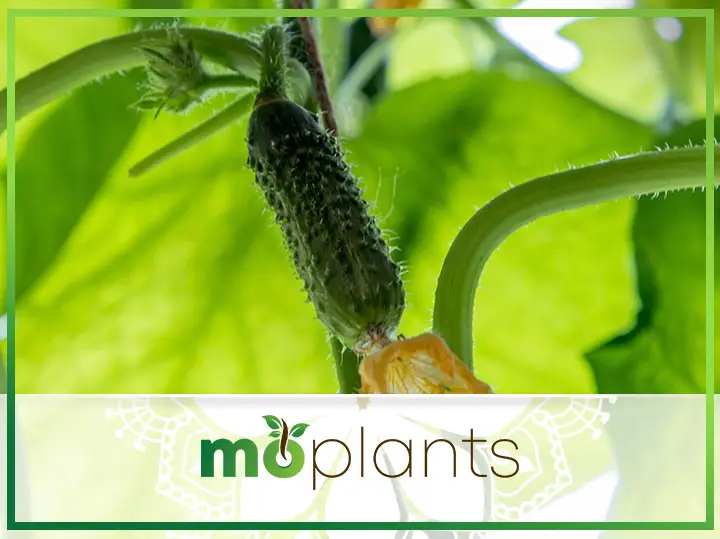
The ovaries of cucumbers are packed with essential nutrients. They are a rich source of vitamins, minerals, and antioxidants that contribute to a healthy diet. By consuming cucumbers with their ovaries, you can maximize the nutritional value of this vegetable.
3. Added Texture
Leaving the ovaries on cucumbers can also provide a pleasing texture. The ovaries add a slightly crunchy element to the cucumber, which can enhance the eating experience. If you enjoy different textures in your food, leaving the ovaries on cucumbers is a great way to achieve that.
4. Reduced Waste
Removing the ovaries from cucumbers creates unnecessary waste. By leaving the ovaries intact, you can minimize food waste and promote sustainability. This small change can make a big difference in reducing your overall environmental impact.
5. Versatile Use
Leaving the ovaries on cucumbers opens up a wider range of culinary possibilities. The ovaries can be used in various recipes, such as pickling, salads, or even as an ingredient in smoothies. By keeping the ovaries, you can explore different ways to incorporate cucumbers into your meals.
| Benefits | Explanation |
|---|---|
| Enhanced Flavor | The ovaries contribute to a robust and flavorful taste. |
| Increased Nutritional Value | The ovaries are a rich source of essential nutrients. |
| Added Texture | The ovaries provide a crunchy texture to the cucumber. |
| Reduced Waste | Leaving the ovaries minimizes unnecessary food waste. |
| Versatile Use | The ovaries can be used in a variety of recipes. |
When to Remove Ovaries on Cucumbers?
Removing ovaries on cucumbers is a common practice among gardeners. It is done to improve the quality and taste of the cucumbers, as well as to redirect the plant’s energy towards fruit production. However, knowing when to remove the ovaries is important to ensure the best results.
1. Wait until the plant flowers
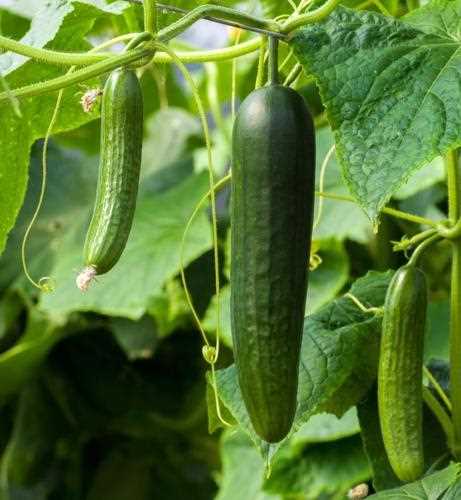
Before removing any ovaries, it is crucial to wait until the cucumber plant starts flowering. The female flowers are the ones that produce the fruit and have the ovaries. Male flowers do not have ovaries and will not develop into cucumbers. By waiting for the plant to flower, you can identify which flowers have ovaries and selectively remove them.
2. Identify the healthy ovaries
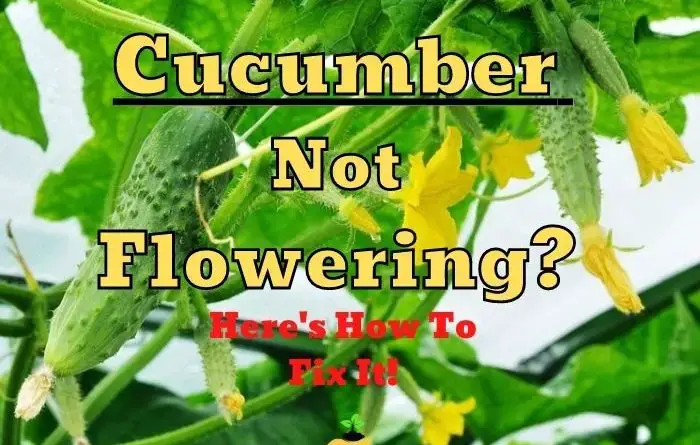
Once the plant has started flowering, inspect the flowers and identify the healthy ovaries. Healthy ovaries are usually larger in size, plump, and have a vibrant green color. They should not have any signs of damage or disease.
3. Remove excess ovaries
After identifying the healthy ovaries, you can proceed to remove the excess ones. It is recommended to keep about two to three healthy ovaries per plant to ensure good fruit development. Removing excess ovaries allows the plant to focus its energy on developing larger, tastier cucumbers.
4. Be cautious with removing all ovaries
While removing ovaries can be beneficial for the plant, it is important not to remove all of them. Completely removing all ovaries may result in the plant not producing any cucumbers at all. A balance needs to be maintained to allow for fruit development while also ensuring the plant has enough ovaries for successful pollination.
5. Regular inspection
Continuously inspect the cucumber plant for new flowers and ovaries. As the plant continues to flower, new ovaries may develop. It is essential to regularly remove any excess ovaries to maintain the plant’s health and productivity.
By following these guidelines, you can determine the right time to remove ovaries on cucumbers and promote better fruit growth and quality.
Methods of Removing Ovaries on Cucumbers
There are several methods that can be used to remove ovaries on cucumbers. The choice of method depends on personal preference and the desired outcome.
1. Hand Removal
Hand removal is the simplest method and is commonly used by small-scale gardeners. This method involves manually plucking the ovaries from the cucumber plant using fingers or small scissors. It is important to be gentle to avoid damaging the plant.
2. Pruning
Pruning is another method that can be used to remove ovaries on cucumbers. In this method, the entire branch or vine that contains the ovaries is cut off using pruning shears. Pruning helps in managing the size and shape of the cucumber plant and can also reduce the risk of disease transmission.
3. Chemical Treatment
Chemical treatment involves the use of chemicals to inhibit the growth of the ovaries. These chemicals are usually sprayed onto the cucumber plant and can effectively prevent the development of cucumbers. However, it is important to carefully follow the instructions on the chemical product to ensure safe and proper use.
4. Natural Methods

Some gardeners prefer using natural methods to remove ovaries on cucumbers. These methods involve using natural substances or techniques to discourage the growth of ovaries. For example, using neem oil or other organic pest control methods can help in preventing the formation of cucumbers.
5. Hybrid Varieties
Another method of preventing the growth of ovaries on cucumbers is by planting hybrid varieties that are bred to be seedless. These varieties produce cucumbers without seeds, eliminating the need for ovary removal.
Overall, the method of removing ovaries on cucumbers depends on individual preference, gardening practices, and the desired outcome. It is important to consider the potential impact of each method and choose the one that best suits your needs.
Common Misconceptions About Ovary Removal on Cucumbers
Ovary removal on cucumbers, also known as parthenocarpy, has often been a topic of controversy among gardeners. There are several common misconceptions surrounding this practice that need to be addressed.
- Misconception 1: Ovary removal is unnatural.
- Misconception 2: Ovary removal affects the taste of cucumbers.
- Misconception 3: Ovary removal is harmful to the plant.
- Misconception 4: Ovary removal eliminates the need for pollination.
- Misconception 5: Ovary removal is necessary for all cucumber plants.
Contrary to popular belief, parthenocarpy or ovary removal is a natural phenomenon that occurs in certain cucumber varieties. It is not a result of genetic modification or artificial interference. Some cucumber plants naturally produce fruit without the need for pollination.
This is not true. Cucumbers that undergo ovary removal are just as tasty and nutritious as pollinated cucumbers. The absence of seeds does not affect the flavor or nutritional value of the fruit. In fact, seedless cucumbers are often preferred by many consumers due to their tenderness and lack of bitterness.
Removing the ovary from a cucumber plant does not harm the plant in any way. It does not affect the plant’s ability to produce more cucumbers or hinder its overall growth. In fact, parthenocarpy can be beneficial for gardeners as it allows them to grow cucumbers in areas where natural pollination may be limited or unavailable.
While ovary removal does eliminate the need for pollination in cucumbers, it is important to note that pollinated cucumbers still have their own unique benefits. Pollination can improve the overall health and vigor of the plant and may result in larger fruit production. Some gardeners may prefer to have pollinated cucumbers for these reasons.
This is not true. Only certain cucumber varieties naturally produce fruit without pollination. Additionally, some gardeners may prefer to have pollinated cucumbers for various reasons such as saving seeds for future planting or supporting local pollinators.
It is important to understand the facts and dispel these common misconceptions about ovary removal on cucumbers. By doing so, gardeners can make informed decisions about their gardening practices and choose the methods that best suit their needs and preferences.
“Question-Answer”
Why do cucumbers have ovaries?
Cucumbers, like all flowering plants, have ovaries as part of their reproductive system. The ovaries contain the ovules, which, when fertilized, develop into seeds.
Can you eat the ovaries on cucumbers?
Yes, you can eat the ovaries on cucumbers. In fact, the ovaries are what we commonly refer to as the cucumber itself. The ovaries or the fruit of the cucumber plant are the part that is typically eaten.
Are the ovaries on cucumbers harmful to consume?
No, the ovaries on cucumbers are not harmful to consume. They are perfectly safe to eat and have no negative health effects.
What happens if you remove the ovaries from cucumbers?
If you remove the ovaries from cucumbers, you are essentially removing the fruit itself. The ovaries are what develop into the cucumber, so removing them would leave you with nothing to eat.
Are there any nutritional benefits to eating the ovaries on cucumbers?
Yes, there are nutritional benefits to eating the ovaries on cucumbers. Cucumbers are low in calories and fat, and they are a good source of vitamins, minerals, and antioxidants. They can also help with hydration due to their high water content.
Can you leave the ovaries on cucumbers if you prefer not to eat them?
Yes, you can leave the ovaries on cucumbers if you prefer not to eat them. Some people may choose to remove the ovaries for personal preference or aesthetic reasons, but it is not necessary for consumption.







